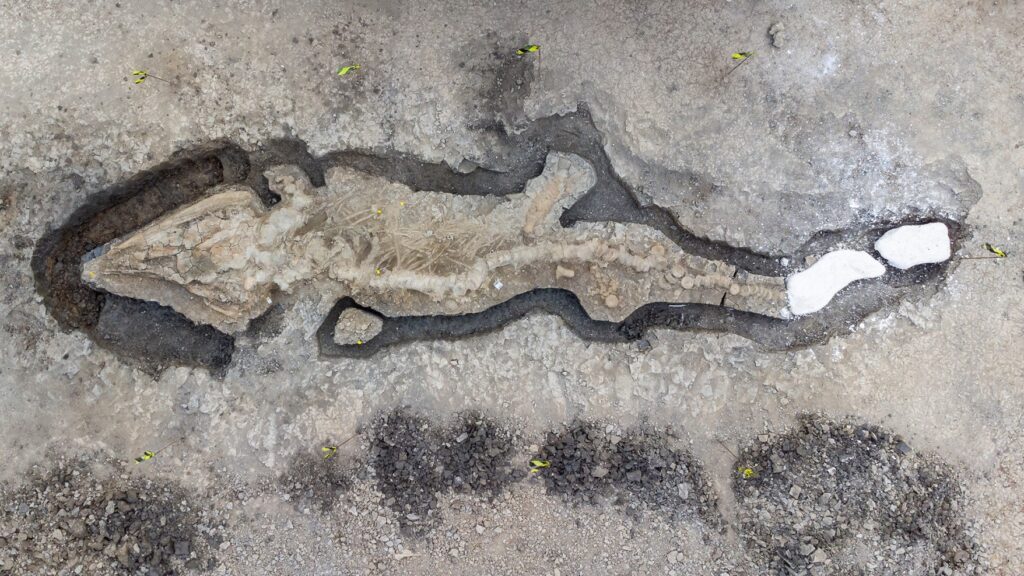Giant 30-foot ‘sea dragon’ fossil from 180 million years ago discovered in UK
The remains of a monstrous, 33-foot-long (10 meters) “sea dragon” that swam in the seas when dinosaurs were alive some 180 million years ago have been unearthed on a nature reserve in England.

The behemoth is the biggest and most complete fossil of its kind ever discovered in the U.K.
“It is a truly unprecedented discovery and one of the greatest finds in British palaeontological history,” excavation leader Dean Lomax, a palaeontologist and visiting scientist at the University of Manchester, said in a statement.
Though many such ichthyosaurs have been found in the U.K., none have been as large as the current discovery.
Ichthyosaurs are an extinct order, or large group, of marine reptiles that evolved in the Triassic period about 250 million years ago and disappeared from the fossil record 90 million years ago, in the late Cretaceous period. They had long snouts and looked similar to modern-day dolphins.
The newly discovered fossil belonged to a large species of ichthyosaur called Temnodontosaurus trigonodon — the first time this species has appeared in the U.K. Joe Davis, a conservation team leader for the Leicestershire and Rutland Wildlife Trust, found the ichthyosaur on the Rutland Water Nature Reserve in the East Midlands in January 2021, according to the statement.
Davis was walking across a drained lagoon with Paul Trevor, who also works on the reserve for the trust when he saw what appeared to be clay pipes sticking out of the mud and remarked to Trevor that they looked like vertebrae.
Davis was familiar with sea creature bones, having previously found whale and dolphin skeletons while working on the Hebrides, a series of islands off northwest Scotland.
“We followed what indisputably looked like a spine and Paul [Trevor] discovered something further along that could have been a jawbone,” Davis said. “We couldn’t quite believe it.”
Archaeologists excavated the fossil between August and September in 2021.
The discovery will be featured on a British television series called “Digging for Britain,” which airs in the U.K. on Tuesday (Jan. 11) on BBC Two.
Archaeologists are still studying and conserving the ichthyosaur fossil and scientific papers about the discovery will be published in the future, according to the statement, though no timeframe was given.





